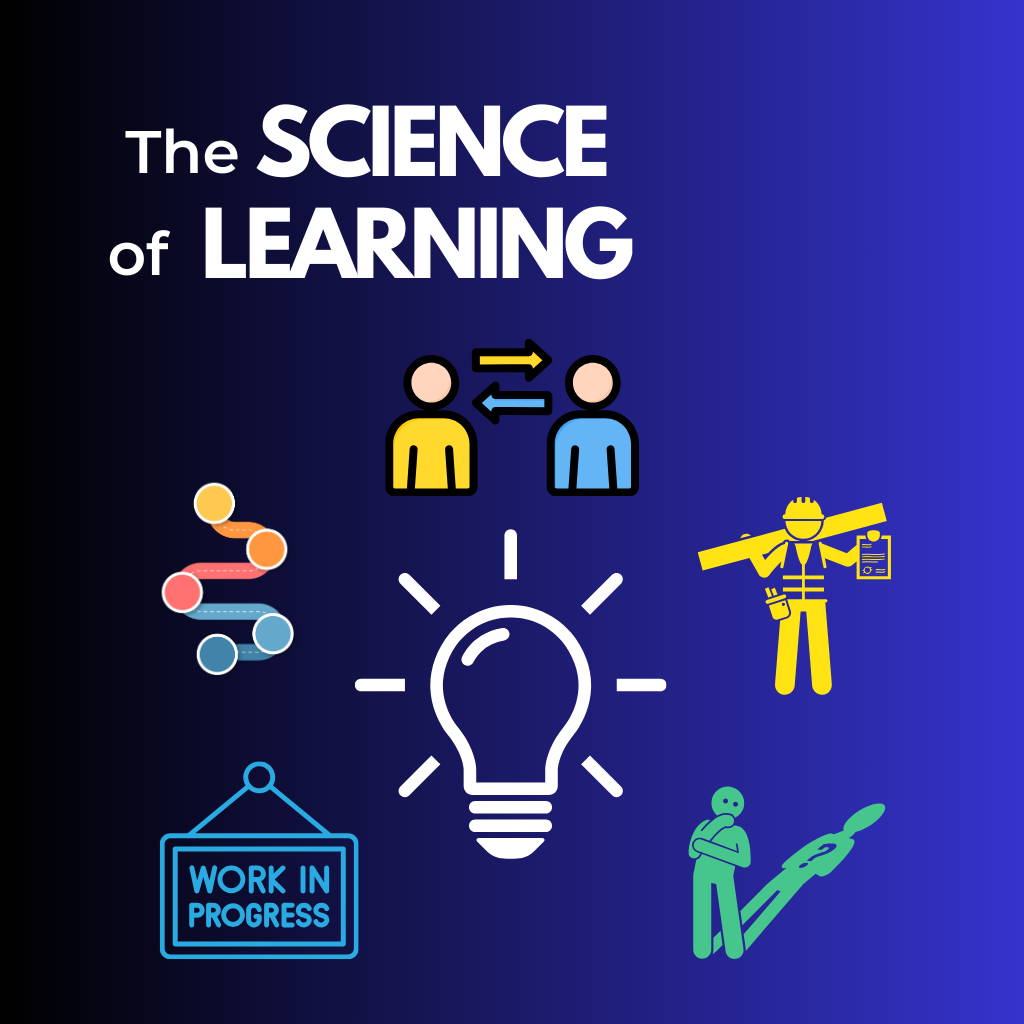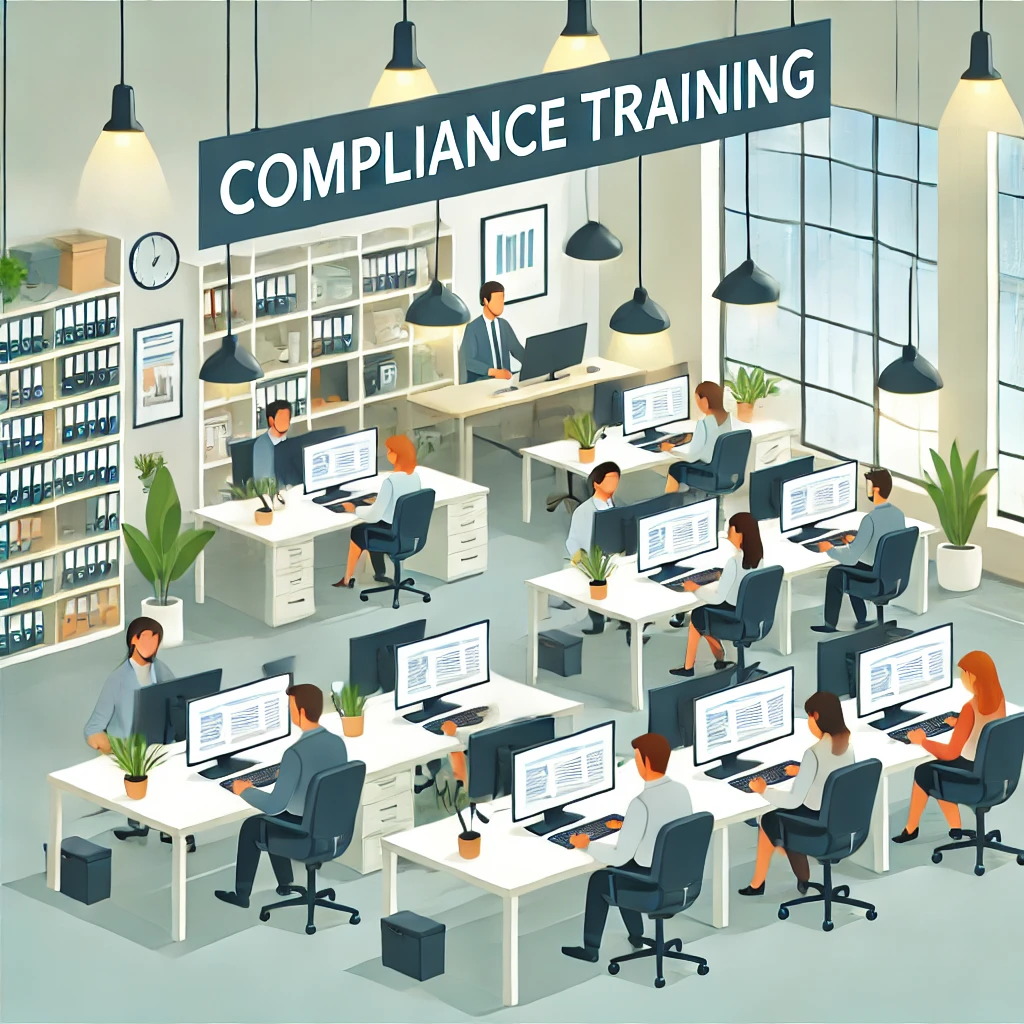In today’s fast-paced and ever-evolving work environment, effective training programs are essential for maintaining a competitive edge. By integrating key principles from the Science of Learning into employee training, organizations can enhance the effectiveness of their programs and ensure that employees acquire, retain, and apply new knowledge more efficiently. Here, we explore practical strategies grounded in these principles that can be applied to optimize workforce training.
1. Active Learning: Engaging Employees through Active Participation
Active learning is a cornerstone of the science of learning, emphasizing the importance of engagement and participation in the learning process. Research has shown that learners retain more information when they actively participate in their learning rather than passively consuming information (Freeman et al., 2014).
Practical Strategy: Incorporate activities such as role-playing, simulations, and problem-solving tasks in your training sessions. Encourage employees to apply what they have learned through hands-on activities, group discussions, and real-world scenarios. This not only reinforces the material but also allows employees to practice and refine their skills in a safe environment.
Contemporary Insight:
Recent studies have emphasized the importance of digital tools and virtual environments in facilitating active learning. With the rise of remote work, virtual simulations and collaborative online platforms have become integral in engaging employees actively, even in distributed teams (Johnson et al., 2022).
2. Spaced Repetition: Reinforcing Learning Over Time
The spacing effect, a well-documented principle in the science of learning, suggests that information is better retained when it is reviewed over spaced intervals rather than crammed in a short period (Cepeda et al., 2006).
Practical Strategy: Design your training programs to include follow-up sessions or refreshers over several weeks or months. This could involve brief review sessions, quizzes, or microlearning modules that reinforce key concepts over time. This approach helps to solidify the knowledge in long-term memory, making it more accessible when needed.
Contemporary Insight:
Research by Dobson (2022) has highlighted the effectiveness of microlearning as a contemporary approach to spaced repetition. Microlearning delivers bite-sized content that employees can engage with on the go, making it easier to integrate into their daily routines.
3. Feedback: Providing Timely and Constructive Input
Feedback is crucial for learning, as it helps learners understand what they are doing correctly and where they need to improve. According to Hattie and Timperley (2007), effective feedback is specific, timely, and actionable.
Practical Strategy: Incorporate opportunities for immediate feedback during training sessions. Use interactive tools such as quizzes with instant feedback, or have trainers provide real-time feedback during practical exercises. Additionally, create opportunities for peer feedback, which can provide diverse perspectives and further reinforce learning.
Contemporary Insight:
A study by Boud et al. (2021) emphasized the importance of personalized feedback in digital learning environments. Using AI-driven analytics, organizations can now offer highly tailored feedback to employees, enhancing the learning experience and addressing individual needs more effectively.
4. Contextual Learning: Making Learning Relevant
Learning is more effective when new information is presented in a context that is relevant to the learner’s existing knowledge and experiences (Bransford et al., 2000). Contextual learning helps employees see the relevance of what they are learning, which enhances motivation and retention.
Practical Strategy: Customize training content to reflect real-life scenarios and challenges that employees face in their specific roles. For example, case studies, industry-specific examples, and on-the-job training can help bridge the gap between theoretical knowledge and practical application. This relevance helps employees understand how to apply their new skills in their everyday work.
Contemporary Insight:
The increasing use of augmented reality (AR) and virtual reality (VR) in training has provided new avenues for contextual learning. These technologies allow employees to immerse themselves in realistic scenarios that closely mimic their work environments, thereby enhancing the relevance and retention of the training material (Pantelidis, 2021).
5. Metacognition: Encouraging Self-Reflection
Metacognition, or thinking about one’s own thinking, plays a critical role in learning. It involves self-assessment and self-regulation of learning strategies, which can lead to better learning outcomes (Schraw & Moshman, 1995).
Practical Strategy: Encourage employees to reflect on their learning experiences by incorporating self-assessment tools and reflective exercises into the training program. This might include keeping a learning journal, setting personal learning goals, or regularly assessing progress towards those goals. By fostering metacognitive skills, employees can become more aware of their learning processes and make adjustments to improve their performance.
Contemporary Insight:
Digital tools such as e-portfolios and reflective apps have become valuable resources for encouraging metacognition in modern training programs. These tools allow employees to document their learning journeys and reflect on their progress, fostering a deeper understanding of their personal and professional development (Järvelä et al., 2021).
Conclusion
Integrating the key principles of the science of learning into workforce training can significantly enhance the effectiveness of these programs. By focusing on active learning, spaced repetition, feedback, contextual learning, and metacognition, organizations can create training experiences that not only engage employees but also lead to meaningful and lasting learning outcomes. As the workplace continues to evolve, applying these principles will ensure that training programs remain relevant, effective, and aligned with the needs of both the organization and its employees.
References
- Boud, D., Dawson, P., & Bearman, M. (2021). The impact of feedback practices on student learning: A review of the research. Studies in Higher Education, 46(5), 878-892.
- Bransford, J. D., Brown, A. L., & Cocking, R. R. (Eds.). (2000). How people learn: Brain, mind, experience, and school. National Academy Press.
- Cepeda, N. J., Pashler, H., Vul, E., Wixted, J. T., & Rohrer, D. (2006). Distributed practice in verbal recall tasks: A review and quantitative synthesis. Psychological Bulletin, 132(3), 354-380.
- Dobson, J. L. (2022). Microlearning and its application in workplace training: A review of recent studies. Journal of Educational Technology Systems, 50(2), 145-157.
- Freeman, S., Eddy, S. L., McDonough, M., Smith, M. K., Okoroafor, N., Jordt, H., & Wenderoth, M. P. (2014). Active learning increases student performance in science, engineering, and mathematics. Proceedings of the National Academy of Sciences, 111(23), 8410-8415.
- Hattie, J., & Timperley, H. (2007). The power of feedback. Review of Educational Research, 77(1), 81-112.
- Järvelä, S., Järvenoja, H., Malmberg, J., Isohätälä, J., & Sobocinski, M. (2021). Self-regulated learning and collaborative engagement in online environments. Computers & Education, 164, 104123.
- Johnson, D. W., Johnson, R. T., & Smith, K. A. (2022). Active learning: Cooperation in the college classroom (4th ed.). Interaction Book Company.
- Pantelidis, V. S. (2021). Virtual and augmented reality in workforce training: Applications and effectiveness. Virtual Reality, 25(3), 561–577.
- Schraw, G., & Moshman, D. (1995). Metacognitive theories. Educational Psychology Review, 7(4), 351-371.





